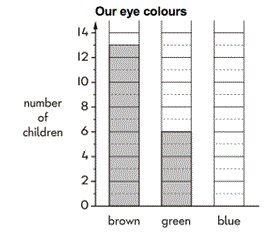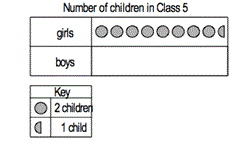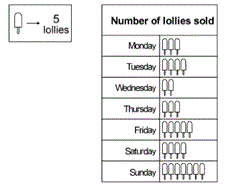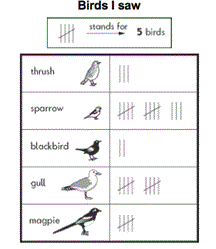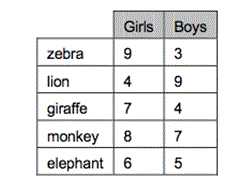| Programme of Study statements |
Activities |
| A |
B |
C |
D |
E |
| interpret and construct simple pictograms, tally charts, block diagrams and simple tables |
|
|
|
|
|
| ask and answer simple questions by counting the number of objects in each category and sorting the categories by quantity |
|
|
|
|
|
| Ask and answer questions about totalling and comparing categorical data. |
|
|
|
|
|
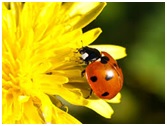
In this activity the children think about how to represent the data collected.

This activity is based on the book 'If the World Were a Village' by David J Smith and Shelagh Armstrong. It looks at different ways to represent data but could also use the idea to make tables, pictograms and block graph. The concept of the world being reduced down to 100 people might be a little challenging, but a similar activity could be planned using the data from one class, year group, or the school.
Activity C - Using an atlas.
Use an atlas and find a table, pictogram or block graph. Discuss what it can tell you and ask the children to come up with questions for each other to answer. Ask them if they think a graph of showing today’s data would look the same? Why?
Activity D - Sound investigation
Link with the Yr2 Science unit. How can we find the quietest place in the school? Use sound level meters to record sound levels in different places at the same time of day. How can we turn these into bar graphs? What do they tell us?
Activity E – Aerial Photographs

Link with KS1 Geography Look at aerial photographs of a local village and town. How can we compare the two? Discuss use of tally charts to record the key features such as fields, houses, shops, etc. Turn into a pictogram or block graph. What does it mean?
Teaching tips from Overcoming Barriers – helping children move from level 1 to 2.
- Provide children with plenty of opportunities to see and make simple lists, such as days of the week, numbers that total 10, multiples of 5, children with birthdays in the summer, etc.
- Draw a table on the playground and get children to physically stand in the correct place. You can then demonstrate how such information can be recorded on paper. Make it explicit to EAL pupils when a subject-specific word, such as ‘table’, carries a different meaning in mathematics to that in everyday language.
- Create block graphs practically by using multilink towers to represent the data. You can then show how this can be represented in a more abstract way on paper.
- Create pictograms quickly in groups or as a class. Initially, create pictograms using real data, for example ask children to take off one shoe and organise them into rows of shoes with laces, buckles, hook and loop tape, etc. Children can then draw their shoe on sticky notes and take it in turns to place it in the correct place on a large paper pictogram. This will quickly generate a set of class data and provide opportunities for questions to be asked.
- Ensure that children experience examples of block graphs and pictograms where the information is represented horizontally, as well as examples where they are represented vertically.
- Data can be generated and discussed on a daily basis by creating an interactive whiteboard file containing the children’s names or photographs. Children can drag and drop their name/photo into the correct place on a table, pictogram or block graph during registration to create data that shows how many children are having sandwiches, school dinner, etc.
- Use tables and charts in role-play areas, for example to show prices in a café, hairdresser’s, toy shop, etc.
- Ensure that children have opportunities to respond to questions that involve the language of comparison, such as: How many more…?, How many fewer…?, What is the difference between…?
- Model how data can be used to answer a given question. You can then provide opportunities for children to begin to consider other questions that particular data could answer. Support them to do this by providing them with question openers, such as those in the bullet point above.
- Model annotating tables, pictograms and block graphs to support reading and interpreting the information they present. Ensure that annotations are a valued part of the classroom environment and displays.
- To support the development of children’s reasoning skills ask questions such as: Would this chart be different if we asked the teachers about their favourite drinks? How?
- Try to maintain a balance across the five aspects of the data-handling cycle. To achieve this balance, you may need to support children to collect and represent the data efficiently in
Useful Resources
Unifix is useful for making 3D block graphs
Post it notes can make quick whole class pictograms or block graphs.



